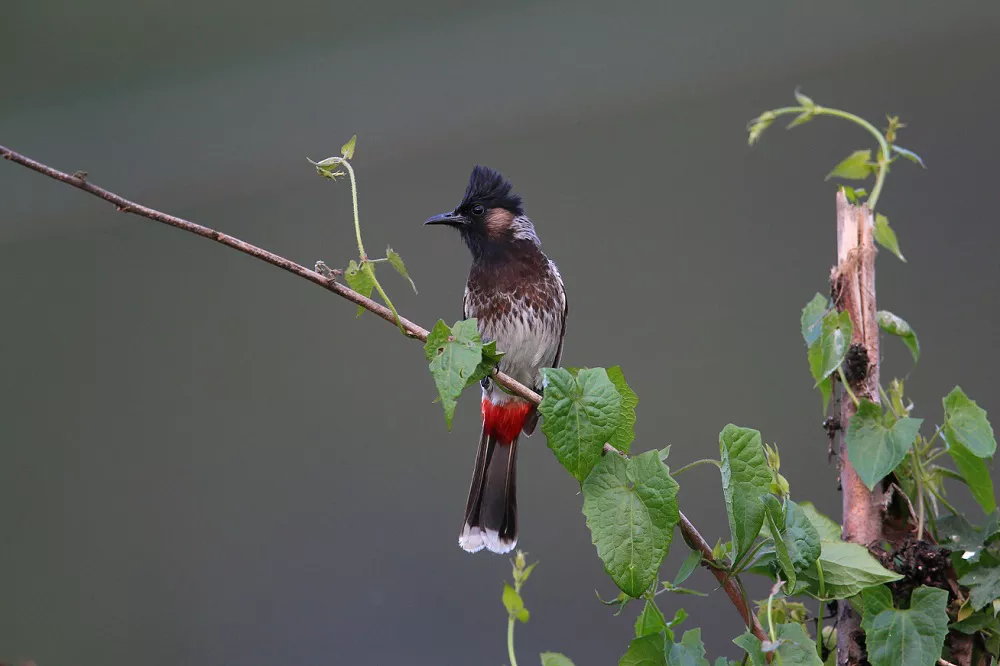The avian world is filled with a variety of species, each possessing unique characteristics that distinguish them from one another. In this article, we will delve into the distinctions between two commonly encountered bulbuls: the Red-Whiskered Bulbul (Pycnonotus jocosus) and the Red-Vented Bulbul (Pycnonotus cafer). While these birds share some similarities, their physical attributes, vocalizations, and distribution set them apart. By understanding these differences, bird enthusiasts can appreciate the diversity within the bulbul family.
Physical Appearance:
Red-Whiskered Bulbul: This species displays a distinctive combination of colors. It has a sleek black crest on its head and a black face mask that extends from the eyes to the neck. The most striking feature of the Red-Whiskered Bulbul is its long, thin red whisker-like feathers located just below the eyes, which give the bird its name. The rest of its plumage is predominantly brownish-gray, with a white belly. The wings are adorned with white and yellow patches, and the tail is long and black.
Red-Vented Bulbul: The Red-Vented Bulbul has a more understated coloration compared to its red-whiskered counterpart. Its overall plumage is olive or brownish-gray, with a red vent (lower belly) that stands out prominently. The head is rounded, and it lacks the distinctive black face mask found in the Red-Whiskered Bulbul. The wings and tail feathers are dark brown or black, with no significant patches of contrasting color.
Vocalizations:
Red-Whiskered Bulbul: This species is known for its diverse repertoire of melodious calls. Its vocalizations include a series of rich, fluid notes and trills, often delivered in a rapid and rhythmic manner. The song is a complex mix of whistles, warbles, and chattering sounds, which the bird uses for communication and territorial defense.
Red-Vented Bulbul: The vocalizations of the Red-Vented Bulbul are comparatively simpler. It produces a range of melodic, flute-like notes, often characterized by a repetitive “chee-up, chee-up” or “pew, pew” sound. The calls are pleasing to the ear and are frequently heard during breeding displays or when defending their territory.
Distribution:
Red-Whiskered Bulbul: Native to South Asia, the Red-Whiskered Bulbul is commonly found in countries such as India, Sri Lanka, Bangladesh, and parts of Southeast Asia. It is also introduced in several other regions, including parts of Europe, North America, and the Middle East.
Red-Vented Bulbul: The Red-Vented Bulbul has a broader distribution compared to the Red-Whiskered Bulbul. It is found across a wider range, including South and Southeast Asia, from India and Nepal to Myanmar, Thailand, Vietnam, and southern China. It has also been introduced in various regions, including Hawaii and Fiji.
Behavior and Diet:
Both the Red-Whiskered Bulbul and the Red-Vented Bulbul exhibit similar behavior and feeding habits. They are social birds often seen in small flocks, frequently congregating in gardens, parks, and forested areas. Their diet consists primarily of fruits, nectar, insects, and small invertebrates.
Conclusion:
While the Red-Whiskered Bulbul and Red-Vented Bulbul may appear similar at first glance, a closer examination reveals distinct differences in their physical characteristics, vocalizations, and distribution. Understanding these variations enhances our appreciation for the diversity of bird species within the bulbul family. Whether admiring their vibrant colors or listening to their delightful songs, encountering these bulbuls in their natural habitats provides a fascinating glimpse into the avian world.
Related topics:


 Facebook
Facebook  Instagram
Instagram  Youtube
Youtube 